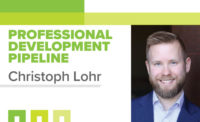So far, we have discussed why organizations need sourcing plans, and covered the planning and process of sourcing. This month we’ll continue the conversation and dive in deep into the interview process itself.
Process 3: Interview process
“Hiring is the most important managerial practice... The first principle of effective hiring is don’t hire. The second principle of effective hiring is to set your bar high. As we move to the interviewing phase of the hiring process, our guiding principle is simple: Look for reasons to say no.” This is an excerpt from “The Effective Hiring Manager,” by Mark Horstman.
Geoff Smart and Randy Street, authors of “Who: Solve Your #1 Problem,” wrote, “To be a great interviewer, you must get out of the habit of passively witnessing how somebody acts during an interview. That puts you back in the realm of voodoo hiring methods, where you end up basing your decision on how somebody acts during a few minutes of a certain day. The time span is too limited to reliably predict anything useful. Instead, the four interviews use the time to collect facts and data about somebody’s performance track record that spans decades.”
An excerpt of Julie Zhuo’s “The Making of a Manager,” reads, “I can’t tell you how many times I have had candidates accept and tell me that part of their reason for doing so was because the interview process felt so attentive, focused and fast. It gave them confidence in our company and the team they would be working with.”
Nick Saban says, “Mediocre people don’t like high-achievers and high-achievers don’t like mediocre people. My goal for spring practice — get the right guys on the bus. Get them in the right seats & get the wrong guys off the bus.”
And lastly, Mike Sarraille and Goerge Randle, authors of “The Talent of War,” wrote, “The Special Operations community has morphed into a world-class case study in talent acquisition and talent management. It’s no surprise why the business world has developed a fascination with Special Operations Forces (SOF) and their ability to build winning teams… What makes them stand apart is their constant evolution in their assessment and selection processes and their absolute refusal to accept mediocracy among their ranks.”
The science of interviewing
With process one and two in full effect (as described in part two of this series), an organization will have the ability to be much more selective for its openings. But in order to better select for an open position from the expanded pool, a company needs to have a robust and well-thought-out interviewing process. Unfortunately, from my observation, most companies do not have this. Having sat in numerous interviews — especially with engineering firms — and spoken with hiring managers, it seems as if much of our industry does not do any of the items listed below. The ironic thing is we are engineers; we are a science-based industry, yet we do not follow the science at all when it comes to interviewing. Hopefully, some of the information below can be put to good use, at least by a few.
The first thing I realized about how wrong most hiring manager are about interviewing is they think they have a 50/50 shot of hiring a good employee. The truth is, if they do everything right (which they do not), the best chance they have is 25% (as detailed by Horstman below.
The problem is most hiring managers and organizations ignore the science, and further reduce their chances or getting a good hire and increase their chances of having bad hires. So what are some of the scientific ways an organization can improve their hiring process?
Structured behavioral interviews:
From what I have witnessed, the current default process for interviewing in our industry is unstructured “interviews.” Let me expand:
- I have seen many interviews where the interviewer does 80% of the talking, and the interviewee does 20% of the talking. If the interviewer is doing the vast majority of the talking, are they collecting the necessary data to make a good hiring decision? No, they are not.
- If two candidates for one position are asked different questions, in different ways, can you objectively compare the candidates? No, now you are making biased subjective hiring decision.
- If you ask questions about previous experience rather than on behaviors, will past performance be indicative of future success? Just like in the stock market, the answer is clearly no.
Instead of doing any of the above, the best and scientifically validated way to interview is to ask structured behavioral questions. Your probability of successfully hiring the best candidate dramatically increases with behavioral interviewing. This means as an interviewer, you are asking questions, not talking and taking notes. It means you ask each candidate the same questions, to make a truly objective comparison. And finally you ask behavioral-based questions. The questions should be developed to make sure the candidate is a fit for the role — modeling the behaviors that are necessary to succeed in the role.
Multiple, maximum 2-on-1, interviews only; no panels
As an interviewee, do you enjoy being grilled on questions or having a conversation with a panel of people sitting opposite you? No. Do audiences make most people nervous? Yes. Do nervous people give good answers? Likely not.
So unless you are hiring for a public speaking role (or someone that presents frequently to panels), why make your job harder in identifying a good candidate for what their actual day-to-day looks like? Instead, hold multiple interviews separately. Google found for its company, four separate interviews was the minimum number of interviews needed (re: Work - How many interviews does it take to hire a Googler?). Smart indicated the same number in his book. Your company may need a different number, but it is worth having peers, reports and supervisors all interview candidates to avoid a “hell on earth” situation.
Interview capture meeting prior to offers
To best make a determination to hire/not hire a candidate, after the multiple interviews with the candidate, an interview capture meeting should take place to download results and help the hiring manager to make a decision to hire/no-hire. This also prevents a hiring manager and his boss from making an offer “on the spot.” Items to look for to make decision is the scorecard, if the meeting shows a “passionate advocate” for the candidate, etc. Avoid “weak-hires” when all the interviewers independently landed on the side of “hire,” but no one is particularly enthusiastic about the potential employee.
Schedule check-ins for offered candidates
After offer is presented to candidate, have a plan in place to check in with candidate every other day to let them know that the organization is thinking about them and they are excited to have them part of our team — because they should be! The more senior the candidate, the more critical it is for leadership to “close” the person as they likely will have many options. Also, if an organization is looking at the candidate to play a leadership role on our team, this critical role needs a little more love. These check-ins, who does them and how they go need to be determined by the hiring manager and/or leadership.
These are at least the initial, easiest steps to take. However, to truly become an expert there is always more that can be learned. For a deeper dive, read the references mentioned in this article. And good luck!




